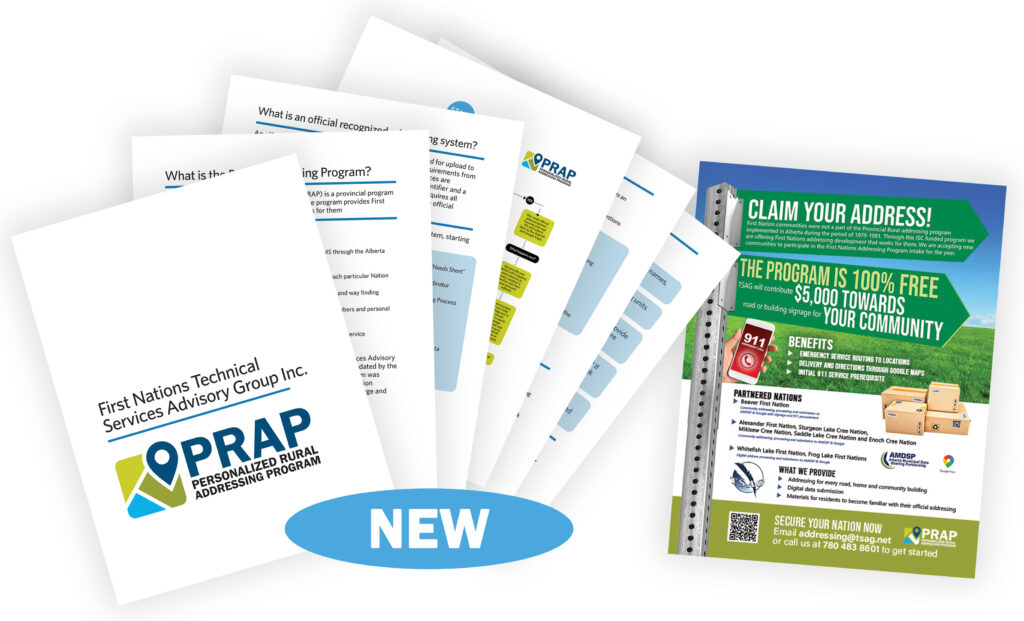PERSONALIZED RURAL ADDRESSING PROGRAM (PRAP)
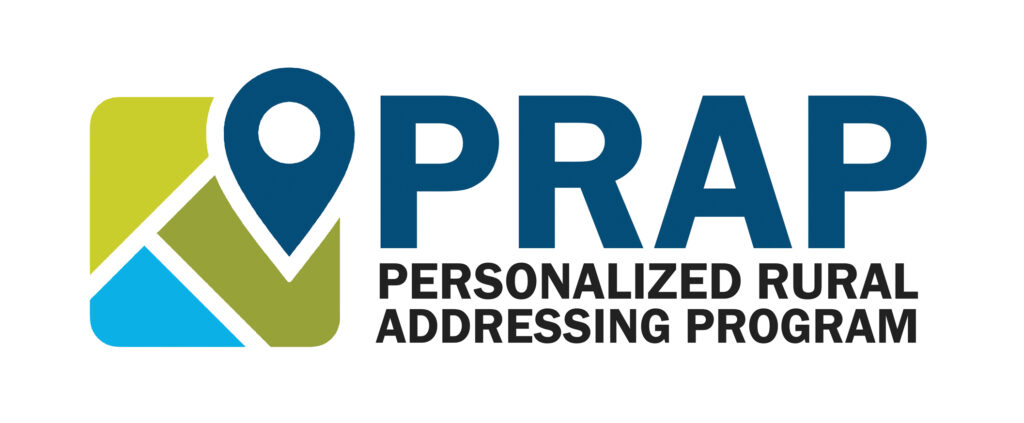
What is the Personalized Rural Addressing Program?

The Personalized Rural Addressing Program (PRAP) is funded provincially through Indigenous Services Canada. The program provides First Nations communities with addressing development that works for them. In Alberta, PRAP is developed by TSAG!
Did You Know?
- From 1979-1981, the Provincial Rural Addressing Program designated range and township roads throughout the province of Alberta. When this happened, First Nation communities were not involved.
What are the Goals of PRAP?
Goals of PRAP
- To develop a recognized addressing system available to EMS through the Alberta Data Sharing Partnership (AMDSP).
- Implementation of community addressing that works for each particular Nation.
- Maximize routing efficiency to locations for EMS, deliveries and wayfinding.
- Community familiarity with their new road names, house numbers and personal addressing.
- Provide official addressing as a prerequisite for 911 Emergency Service implementation.
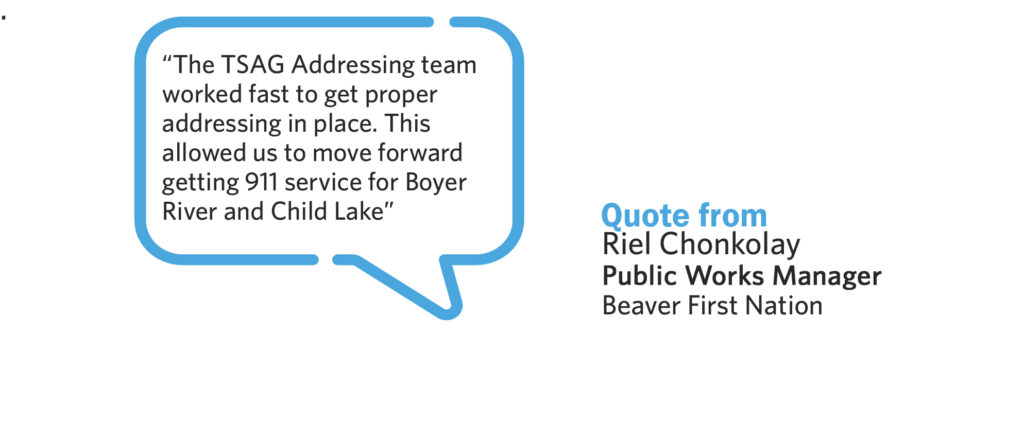

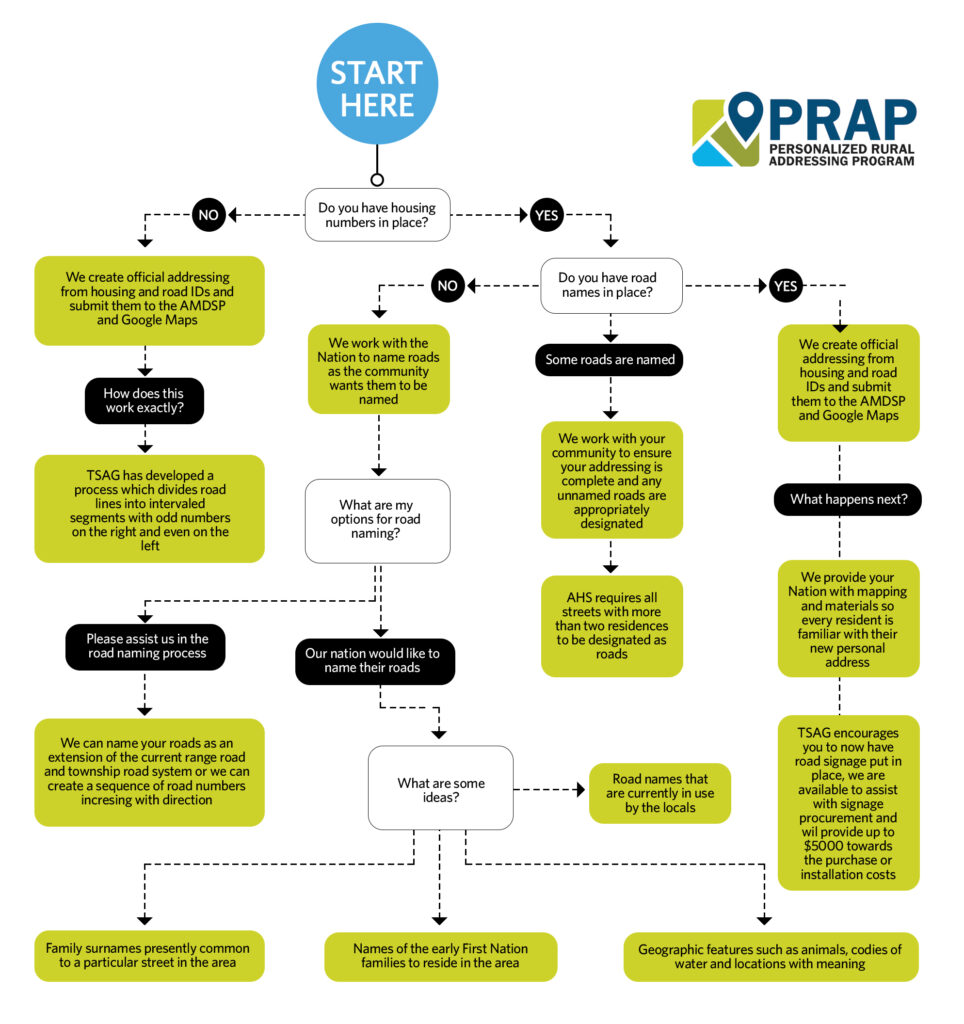
What is an Official Recognized Addressing System?

An official recognized is one that is submitted and approved for upload to the Alberta Data Sharing Partnership (AMDSP). As per requirements from Alberta Health Services it ensures that all occupied residences are designated with an official address containing a numeric identifier and a named road. In order to minimize way-finding confusion, it requires all streets with more than two residences to be designated as an official recognized road, with its own identifier.

There are many steps to achieving a recognized addressing system, below they are summarized into four primary phases.
Phase 1
- TSAG GIS Addressing Coordinator provides Nation with Addressing Project “Needs Sheet.”
- Nation to collect all relevant data to provide to TSAG GIS Addressing Coordinator.
- Verify the data; collecting all data, digitizing data, update data for Addressing Process.
- Develop best-suited plan for the community.
- Nation signs off on Project Charter.
- Review received data; process, clean & digitize if necessary; contact Nation if data errors/gaps exist.
- Structure asset data and page layout processing: Input data into digital format, data-driven pages for creation of atlas map books.
Phase 2
- Initial roads Data Processing: Combine Alberta Municipal Data Sharing Partnership (AMDSP) roads network with Nation’s roads.
- Designate and Assign Roads: Identifiers need to be assigned to any street with more than two residences as per EMS and AMDSP standards.
- Development of aerial overview; 1:4,000 map book format allows for optimal review purposes.
- Map books for aerial review: Structure status -every residence been requires an identifier, remove uninhabitable from addressing process.
- Nation review: Review road, housing and community building naming conventions and verify every current habitable structure been accounted for.
Phase 3
- Adapt all approved changes discussed and emailed by the Nation.
- Approval of addressing from Nation’s Addressing Team to TSAG GIS Addressing Coordinator.
- Format Nation’s addressing data to AMDSP requirements.
- Format Nation’s addressing data to Google Map requirements.
- Development and delivery of finalized addressing products for familiarity within the community.
Phase 4
- Annually engagement with the community for changes to roads, residential and community buildings.

What Else Does PRAP Help With?
While the main objective of PRAP is the development of recognized community addressing, we also provide assistance in the following fields in an effort to help you achieve your end goal:
Additional Services
- Current Housing Occupants (Necessary for NG911 implementation): Available to work with your housing department to update housing inventory to current status through mapping and digital data creation.
- Signage (Necessary for NG911 implementation): Available to provide assistance with the inventory calculations, estimates and sign procurements for road blades and housing numbers.
- Next Generation 911 procurement (NG911): Initiation of requests for support and procurement to both AB GOV 911 team and Telus NG911 Service Team.

Needs Sheet
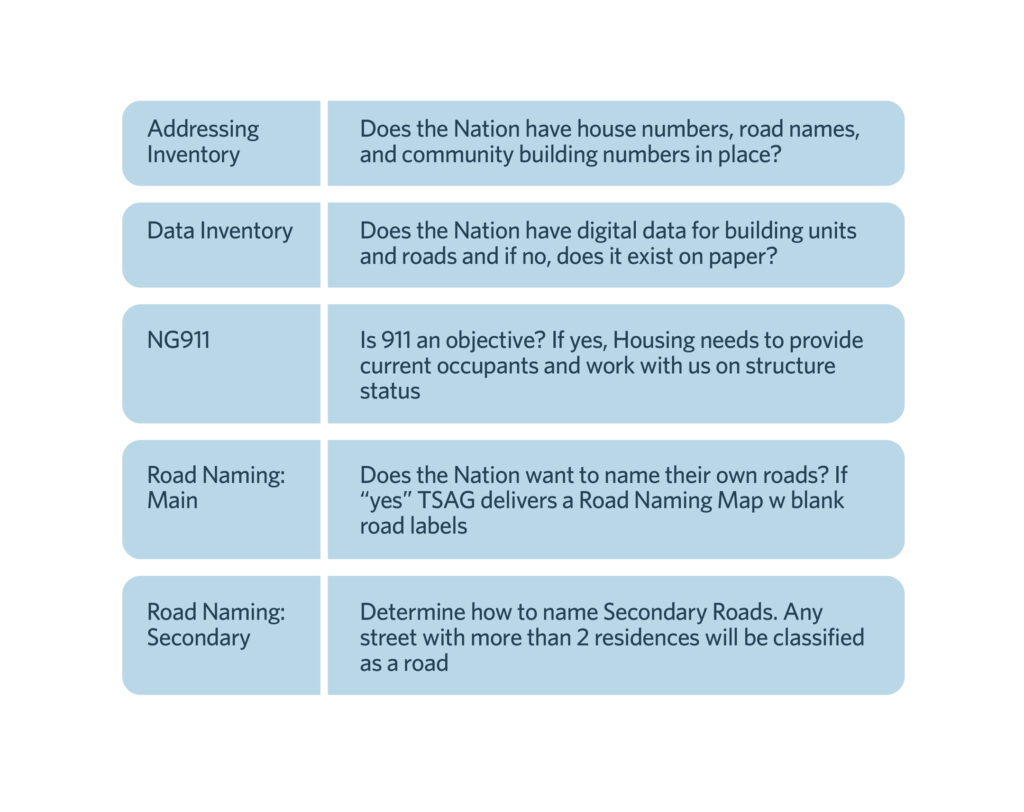

Who Do I Contact?

For more information about our services, please contact:
GIS Technician
Gregg Muller
E: addressing@tsag.net
T: 780-483-8601

